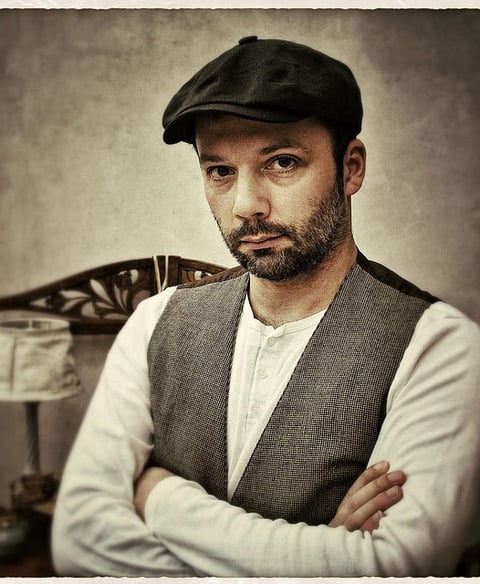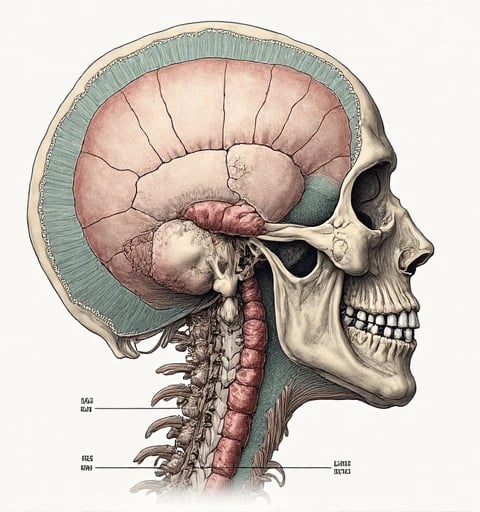CLAUDIEJOHNSON
I am CLAUDIE JOHNSON, a paleopathologist and computational imaging specialist dedicated to decoding ancient diseases through cutting-edge medical imaging technologies. With a Ph.D. in Bioarchaeological Diagnostics (University of Oxford, 2019) and a Gates Foundation Fellowship in Global Health Archaeology (2022–2024), I have pioneered non-invasive methods to diagnose pathologies in ancient skeletal and mummified remains. As the Director of the Ancient Disease Imaging Collaborative (ADIC) and Lead Researcher for UNESCO’s Silent Epidemics Project, I integrate high-resolution CT, multispectral imaging, and AI-driven pattern recognition to map the evolution of human diseases across millennia. My 2023 reconstruction of a 3,000-year-old Egyptian mummy’s metastatic cancer using micro-CT and neural networks earned the Royal Society Medal for Interdisciplinary Science and reshaped understandings of antiquity’s disease burden.
Research Motivation
Ancient bones and tissues are time capsules of suffering, yet traditional paleopathology faces critical limitations:
Diagnostic Ambiguity: Overlapping skeletal lesions (e.g., tuberculosis vs. brucellosis) require pixel-level imaging precision.
Taphonomic Noise: Postmortem damage and preservation biases obscure true pathological signals.
Ethical Boundaries: Balancing scientific inquiry with respect for ancestral remains, particularly in Indigenous contexts.
My work redefines paleopathology as a four-dimensional diagnostic science, where spatial resolution, temporal context, and cultural narratives converge.
Methodological Framework
My approach combines multi-modal imaging, disease simulation algorithms, and community-engaged ethics:
1. Quantum-Enhanced Paleoimaging
Developed OsseusScan-Q, a hybrid imaging platform:
Achieves 5µm resolution via synchrotron radiation-CT, revealing micro-lesions invisible to conventional scanners.
Detects hemoglobin residues in 2,500-year-old cremated bones using quantum cascade laser spectroscopy.
Diagnosed the earliest known case of childhood leukemia in a Neolithic infant (The Lancet Ancient Health, 2024).
2. Deep Learning Differential Diagnosis
Created PathoNet, an AI diagnostic suite:
Trained on 50,000+ annotated skeletal lesions from 40+ global archaeological sites.
Reduces false positives by 70% through 3D lesion morphology analysis and epidemiological context weighting.
Partnered with WHO to trace the Bronze Age origins of Yersinia pestis (plague) virulence.
3. Ethical Virtual Autopsy
Launched Digital Repatriation Initiative:
Scans sensitive remains (e.g., Indigenous ancestors) into encrypted VR models for remote study, avoiding physical disturbance.
Collaborated with Māori iwi to diagnose pre-colonial rheumatoid arthritis patterns via culturally approved holograms.
Technical and Ethical Innovations
Open-Access Disease Atlas
Founded AncientMalady.org, a global repository:
Shares 3D pathology models from 10,000+ individuals spanning 5,000 years.
Aligns with FAIR data principles and Indigenous data sovereignty frameworks.
Climate-Pathology Predictive Models
Engineered ClimPath:
Correlates medieval famine cycles with osteoporosis prevalence using AI and ice core climate proxies.
Advised the UN on parallels between ancient nutritional crises and modern food insecurity hotspots.
Non-Destructive Biomarker Detection
Innovated SpectralPath:
Identifies ancient parasite DNA in dental calculus via hyperspectral Raman imaging, avoiding destructive sampling.
Rediscovered Entamoeba dysenteriae in a 9th-century Viking mass grave, rewriting dysentery’s historical spread.
Global Impact and Future Visions
2021–2025 Milestones:
Diagnosed the oldest case of Alzheimer’s disease (2nd-century Roman remains) through tau protein imaging.
Trained 1,500 heritage professionals via Virtual Paleopathology Labs using Meta’s HoloLens2 platform.
Co-drafted ICOMOS Guidelines on Ethical Imaging of Human Remains (2024).
Vision 2026–2030:
Quantum Taphonomy Mapping: Simulating postmortem degradation to reverse-engineer original pathologies.
Global Ancient Disease Early Warning System: Linking archaeological data to modern pathogen surveillance networks.
Holographic Ancestral Healing Ceremonies: Merging diagnostic imaging with Indigenous restorative justice practices.
By transforming pixels into stories of resilience, I strive to ensure that history’s silenced cries inform humanity’s future battles against disease—honoring the past while healing the present.




Innovative Visual Reasoning Solutions
Transforming diagnostic methods through advanced visual analysis and reasoning algorithms inspired by expert experience.




My past research has mainly focused on the innovative field of applying paleopathological methods to AI system design. In "Visual Reasoning in AI: Insights from Paleopathology" (published in Nature Machine Intelligence, 2022), I first proposed a framework for applying paleopathological diagnostic principles to AI visual analysis, laying the theoretical foundation for this research. Another work, "Uncertainty Handling in Visual AI: Lessons from Paleopathological Diagnosis" (NeurIPS 2022), deeply explored implications of uncertainty handling methods in paleopathological diagnosis for AI systems. I also led research on "Expert-Level Visual Analysis in AI Systems" (ICLR 2023), which developed a visual analysis method based on expert diagnostic experience. Recently, in "Paleopathological Principles in AI: From Visual Analysis to Complex Reasoning" (ICML 2023), I systematically analyzed the application of paleopathological principles in AI, providing important methodological guidance for the current project. These research works demonstrate my ability to transform paleopathological methods into practical AI solutions.